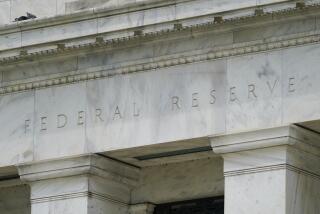The worldâs banker
SOMEWHAT UNFAIRLY, CRITICS like to say that Alan Greenspanâs main legacies include a real estate bubble in this country and a loss of trillions in the dot-com crash. In truth, the sea of construction cranes in Shanghai, and spreading prosperity in India, may be the retiring Federal Reserve chairmanâs most lasting legacies.
Greenspan, after all, has been as much the worldâs central banker as he has been Americaâs.
When he became chairman in 1987, Cold War tensions were receding and a crop of small economic tigers had started to emerge in Southeast Asia. China and India were poor and stagnant. Today, the scale of global economic activity makes the world of 1987 look tiny. Trillions of dollars swirl efficiently through stock and bond markets each day, at a volume more than 10 times larger than in 1987. Global trade is booming, and Southeast Asiaâs spark became a prairie fire of economic growth in China and India, fueling an unprecedented level of integration with U.S. business.
The Federal Reserve remains a mysterious institution to many, although its primary job is to control the supply of money and credit in the economy, most visibly by setting short-term U.S. interest rates. The Fed also governs that slippery commodity known as confidence, which holds together a sprawling financial system essentially based on trust.
For the Fed, keeping the confidence of bond traders is one goal; earning the trust of U.S. consumers is another. In this day and age, however, inspiring belief in the U.S. financial system also supports global demand for the dollar and a supply of affordable consumer goods and services. China now holds more than $800 billion in foreign reserves, effectively financing our low interest rates, which in turn finance the nationâs seemingly perennial consumption binge. Over the last year, many economists have puzzled over why yawning U.S. trade deficits -- weâre buying more than weâre selling -- have failed to depress the value of the dollar. The answer has to do with such intangibles as confidence in Greenspanâs stewardship.
The chairman who left graduate school without finishing his doctoral dissertation has long prided himself on having an appreciation for real-world indicators. He understood early on how technology would contribute to productivity growth, and that the gradual integration of China and India into world markets is in the process of effectively doubling the overall supply of labor, holding down global inflation.
The conventional indicators of Greenspanâs success are clear. He successfully kept inflation in check for nearly two decades. He presided over two of the longest economic expansions in U.S. history, and he helped keep recessions short. Greenspan also responded adroitly to financial crises, including the stock market crash two months into his tenure in 1987 and the Asian meltdown a decade later.
Greenspan always seemed to pride himself on being oblique in his testimony before Congress and in other speeches, with the notable exception of his âirrational exuberanceâ comment in 1996. More recently, the chairman deserves some criticism for failing to be more forthright in criticizing the wisdom of some of President Bushâs tax cuts in his congressional testimony, even if the Fed has no direct role in setting fiscal policy. Perhaps it was inevitable that Greenspan would eventually lose the God-like status he enjoyed during the bullish 1990s. Yet he leaves behind an impressive -- and global -- legacy.
More to Read
Inside the business of entertainment
The Wide Shot brings you news, analysis and insights on everything from streaming wars to production â and what it all means for the future.
You may occasionally receive promotional content from the Los Angeles Times.










